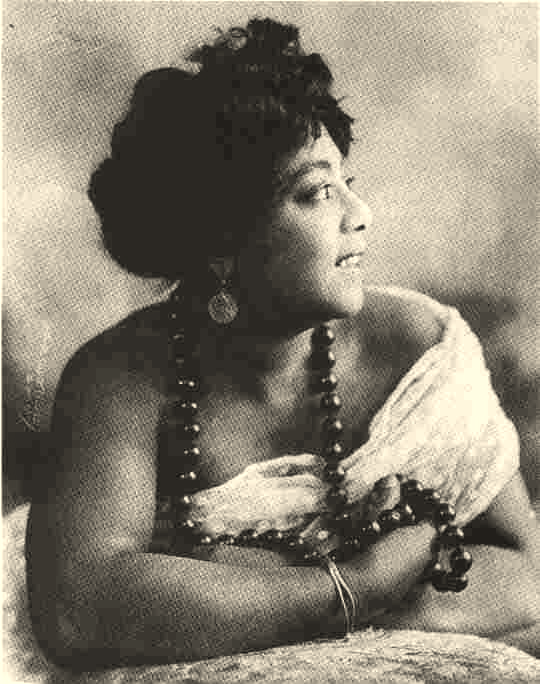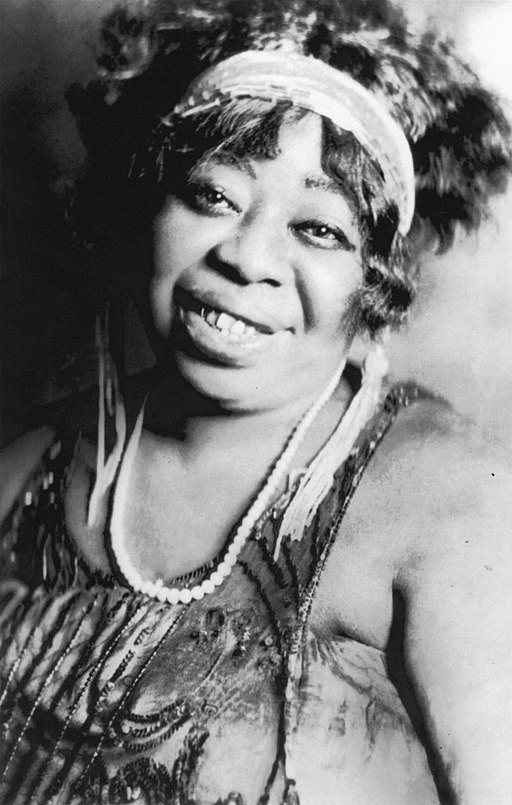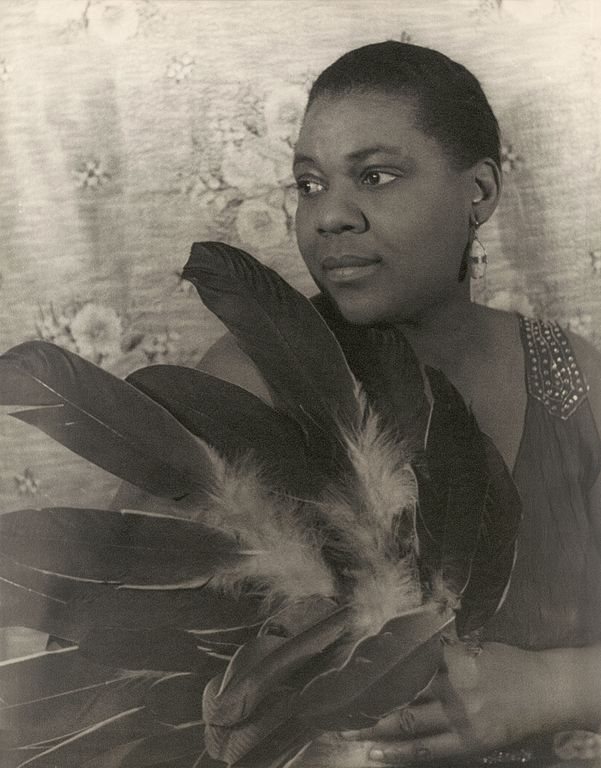Blues is a musical genre that developed in the Deep South of the United States towards the end of the nineteenth century. Sung and played predominantly by newly emancipated slaves working in blue-collar jobs, the blues merged European harmonic structure with the African call-and-response tradition, while lyrics addressed the struggles of everyday life.
By the early twentieth century, distinct regional varieties of the blues had developed across the country, such as Piedmont, Delta and Texas. Gradually, the genre reached a mainstream level of popularity when composer W.C. Handy transcribed and orchestrated blues numbers in a symphonic style, introducing them to white audiences through nightclub and theatre performances.
While it is often male pioneers like Lead Belly, Robert Johnson and Son House that come to mind when thinking of the early blues, women were also an influential part of this development. According to Nghana tamu Lewis, Professor of English and Africana Studies at Tulane University, the blues enabled women to ‘manipulate and control their construction as sexual objects’ and ‘own their past, present and future by confiscating and reconstructing their identities’. Below, I shine a spotlight on three of these unsung women who shaped the blues.
Mamie Smith (1891–1946)
‘Mamie Smith almost singlehandedly jump-started the popularity of blues music in American culture’, argued music journalist Jas Obrecht in a 2019 article for Living Blues. ‘Everybody who loves music and performs blues music, whether they know it or not, they owe a debt of appreciation to Mamie Smith.’Born in 1891 in Cincinnati, Ohio, Smith began touring at the young age of ten with the Four Dancing Mitchells and, later, with the Smart Set Company. In 1913, she left the Company to pursue her own career, performing in clubs around Harlem. In February 1920, she made history when she recorded ‘That Thing Called Love’ and ‘You Can’t Keep a Good Man Down’ for the New York label, Okeh. These were the first commercial recordings by a Black blues singer and they were a major success, paving the way for future Black blues singers to record, and marking the beginning of the era now known as classic female blues. Smith’s biggest hit came six months later with ‘Crazy Blues’, which sold one million copies in its first year. The song earned her the title ‘Queen of the Blues’ and was inducted into the Grammy Hall of Fame in 1994 as a recording of ‘historical significance’.

Ma Rainey (1886–1939)
Born in
Columbus, Georgia in 1886, Ma Rainey started performing as a teenager in black
minstrel shows. After marrying Will Rainey in 1904, they toured together as
part of the Rabbit Foot Minstrels and then formed their
own group, Rainey and Rainey: Assassinators of the Blues in 1914. Rainey’s
innovative blend of vaudeville with Southern blues led to her discovery by Paramount Records in 1923. Over the
next five years, she would make over 100 recordings, including ‘Bad Luck Blues’, ‘Bo Weevil Blues’ and ‘Moonshine Blues’, and collaborate with
such names as Tommy Dorsey, Tampa Red and Louis Armstrong. Unlike many other
blues artists of the time, Rainey wrote one-third of her own songs, boldly
filling them with women who, according to political activist Angela Y. Davis, ‘explicitly celebrate their right to
conduct themselves as expansively and even as undesirably as men’, and live
lives that transgress ‘ideas of white middle-class female respectability’.
Davis also sees Rainey’s music as a ‘cultural precursor to the lesbian
cultural movement of the 1970s’, with many of her songs unique in their
references to lesbianism and bisexuality (e.g. ‘Prove It On Me’). Remembered today as
the ‘Mother of the Blues’, Rainey was posthumously inducted into the Blues Hall of
Fame in 1983 and the Rock and Roll Hall of Fame in 1990.

Bessie Smith (1894–1937)
Bessie Smith
was born in Chattanooga, Tennessee in 1894. Following her parents’ early
deaths, she and her siblings survived by performing on street corners. In 1912,
Smith auditioned for the Stokes Troupe and was hired as a dancer. She then went
on to form her own act, quickly building a reputation in the South and along
the East Coast. Following in the footsteps of Mamie Smith and Ma Rainey, in
1923, she was discovered by Columbia Records. This marked the
start of a successful recording career, ‘Cemetery Blues’ and ‘Downhearted Blues’ being particular
bestsellers. As Smith’s popularity grew, she became the headliner of the Theatre Owners Booking
Association circuit and the highest paid Black entertainer of her day. During the
swing era of the 1930s, she deftly adapted her blues artistry to fit and remain
relevant. According to Coretta Pitman, Associate Professor
of English at Baylor University, Smith’s music stressed ‘independence, fearlessness and sexual freedom, demonstrating
that working-class women did not have to alter their behaviour to be worthy of
respect’. She also dealt critically with such issues as chain gangs, the
convict lease system and capital punishment. Nicknamed the ‘Empress of the
Blues’, Smith was inducted into the Rock and Roll Hall of Fame in 1989.

Mamie Smith, Ma Rainey and Bessie Smith are three trailblazers of the blues. They represent some of the first Black voices on record, helping disseminate the genre across the world and laying the groundwork for future music genres, such as R&B, rock ‘n’ roll and blues rock. Furthermore, their lyrics offered ‘an unprecedented new arena of self-expression’ as they often sang about ‘overt sexuality, abusive men and even queer perspectives’. Together, they articulated a ‘collective experience of freedom’, thereby defying social norms and giving a voice to the voiceless. Their important place in the history of the blues cannot be overstated.




Rate and Review
Rate this article
Review this article
Log into OpenLearn to leave reviews and join in the conversation.
Article reviews
i like that you can click onto a word and it will take you to another site for a in depth information on the topic